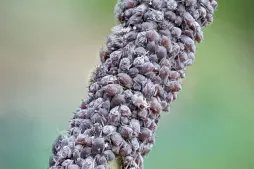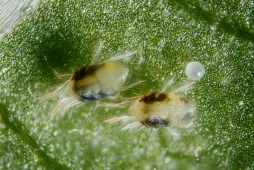Polyscias balfouriana, an aralia with leathery leaves
While the foliage of some Polyscias resembles that of parsley or ferns, that of Polyscias balfouriana is reminiscent of ivy. Not surprisingly, this shrub native to Australia and New Guinea belongs to the same family: Araliaceae.
How to recognize Polyscias balfouriana?
Polyscias balfouriana grows to a maximum height of two meters. It is an upright, bushy shrub.
The trunk is covered with dark-brown bark, and the branches are speckled with gray.
The almost leathery foliage lasts all year round. The leaves consist of three rounded, elliptical to kidney-shaped leaflets, with crenellated margins and pronounced veins. The botanical variety has plain green foliage. But some cultivars, such as polyscias balfouriana 'Marginata', have leaves with white margins.
Flowering can take place at any time. However, it is very rare indoors. It takes the form ofumbels of cream flowers, grouped in panicles at the top of branches.
Polyscias balfouriana is toxic, from the roots to the foliage, via the trunk and sap. The plant causes nausea and digestive problems if ingested. It can also cause irritation on contact. Keep your shrub out of reach of pets and young children. Remember to wear gloves when pruning or repotting.
Our maintenance tips
Polyscias balfouriana hate bright light and limestone. Place your plant behind an east-facing window and water it only with rainwater or natural spring water.
Watering
Polyscias balfouriana require regular watering. But it must be moderate, otherwise the roots will rot. The substrate must remain moist but never soggy.
Water your plant with soft, non-calcareous water at room temperature. Once you've finished, drain off any water that accumulates in the saucer or planter.
Water your plant with soft, non-calcareous water at room temperature. Once you've finished, drain off any water that accumulates in the saucer or planter.
Spray
Mist foliage to increase humidity and repel pests. Always spray with rainwater. Tap water is too hard and leaves white marks on the leaves.
Repotting
In spring, transfer your Polyscias balfouriana to a larger pot, so that it can continue to grow.
Get a pot with holes larger than the root ball. You can line the bottom with clay balls to optimize drainage.
Polyscias balfouriana plants grow best in heather soil. Place a layer of potting soil at the bottom of the pot. Plant your plant and add substrate to reach the height of the root ball.
Tamp and water to encourage rooting.
Place your pot on a saucer filled with moist clay balls to improve humidity.
Fertilization
You can stimulate the development of your plant during its growth phase, in spring and summer, with fertilizer.
Apply green plant fertilizer in addition to watering.
Prune
You can prune your Polyscias balfouriana to control its growth.
Use clean pruning shears to top. You can also shorten the branches.
Cutting
Using your pre-cleaned scissors, remove a ten- to fifteen-centimeter stem (about three nodes). Remove the leaf at the base of your cutting.
To propagate cuttings, plant the seedling in a pot with a fine potting soil, such as potting soil for cuttings and seedlings, or a substrate that you have previously sieved.
Mist and cover with an empty bottle. Aerate your mini-greenhouse for a few minutes a day and spray two or three times a day.
Mist and cover with an empty bottle. Aerate your mini-greenhouse for a few minutes a day and spray two or three times a day.
Diseases / Threats
Information
| Family | Araliaceae - Araliaceae |
| Type | Polyscias - Polyscias |
| Species | Polyscias balfouriana - Polyscias balfouriana |
| Lifecycle | Perennial |
| Foliage | Evergreen |
| Exposure | |
| Substrat | |
| Planting methods |
In pots In tubs |
| Categories | |
| Tag |
Toxic |
| Origin |
Oceania |
| Hardiness (USDA) | 11a |
| Leaf color |
|
| Flower color |
|
Discover plants from the same family
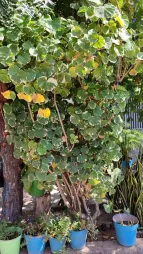
Polyscias balfouriana 'Marginata'
Discover
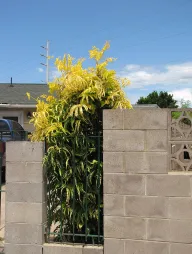
Polyscias filicifolia
Discover
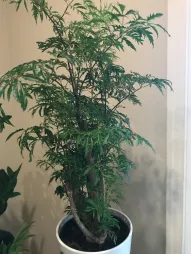
Polyscias fruticosa
Discover
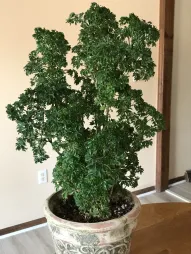
Polyscias 'Elegans
Discover













